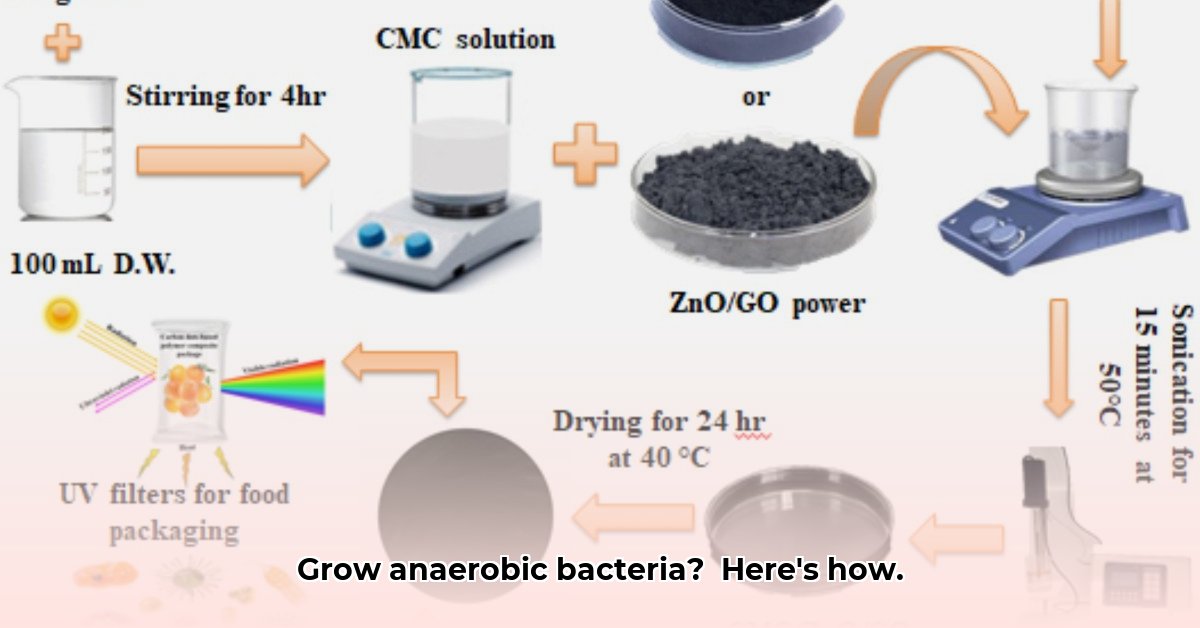
CMC Broth: A Comprehensive Review for Cultivating Anaerobic Bacteria
CMC (chopped meat carbohydrate) broth is a crucial medium for cultivating anaerobic bacteria—microorganisms that thrive in oxygen-depleted environments. Its rich nutrient composition and protective properties make it ideal for enriching and preserving a wide range of anaerobic species, particularly Clostridia, known for their diverse roles in various ecosystems and their clinical significance. This review article explores the applications, advantages, limitations, and future directions of CMC broth in microbiology.
Giving Anaerobes a Home: Understanding CMC Broth's Effectiveness
CMC broth's effectiveness stems from its ability to simulate an oxygen-free environment mimicking the natural habitats of anaerobic bacteria. The finely minced meat provides essential nutrients, while the carbohydrate source fuels bacterial growth. This nutrient-rich, protective environment allows even small inocula of bacteria to flourish, enabling scientists to observe key processes such as spore formation and protein degradation. Studies demonstrating successful cultivation of diverse anaerobic species, including C. tetani, C. sporogenes, Prevotella melaninogenica, and Fusobacterium necrophorum, highlight the medium's versatility and efficacy. However, it's crucial to remember that CMC broth primarily serves as an enrichment medium; further testing is needed for definitive bacterial identification.
CMC Broth and its Analogues: Comparative Analysis
CMC broth belongs to a family of similar media, including CM (chopped meat) and CMG broths. While sharing similarities, subtle differences in their composition may significantly influence bacterial growth rates, toxin production, and protein breakdown. The lack of comprehensive comparative studies represents a significant gap in current knowledge, underscoring the need for further research to elucidate the impact of these variations on anaerobic bacterial cultivation. Such research would contribute to optimizing each broth for specific bacterial species and applications.
Real-World Applications of CMC Broth
CMC broth’s utility extends beyond fundamental research. Clinical microbiology laboratories utilize it as an initial enrichment step in the identification of anaerobic pathogens from patient samples, facilitating accurate diagnosis and effective treatment. Researchers employ CMC broth extensively in preserving anaerobic bacterial cultures and studying their metabolic activities, particularly focusing on specific processes that could contribute to or combat disease.
The ongoing efforts by manufacturers to enhance the quality and shelf life of CMC broth (currently approximately one year) are noteworthy. These efforts involve optimizing production methods and exploring innovative packaging solutions to prevent oxygen contamination and extend the broth's usability.
Unanswered Questions and Future Research Directions
Despite its wide usage, significant knowledge gaps remain regarding CMC broth. Further comparative studies are needed to directly evaluate the performance of CMC, CM, and CMG broths, assessing differences in bacterial growth rates, toxin production, and protein degradation under controlled conditions. Comparative analyses with other commonly used anaerobic media would provide a broader understanding of their individual strengths and weaknesses. This can be achieved with rigorously controlled experiments, standardized protocols, and detailed data analysis.
Stakeholder Perspectives and Research Priorities
The following table summarizes the diverse goals and priorities of key stakeholders in CMC broth research and development:
| Stakeholder | Short-Term Goals (0-1 year) | Long-Term Goals (3-5 years) |
|---|---|---|
| Clinical Labs | Improve consistency in anaerobic bacterial culture protocols using CMC broth. | Develop standardized quality controls and validation processes for CMC broth; exploring improved oxygen-free packaging. |
| Anaerobic Researchers | Expanding use of CMC broth in research relating to specific anaerobic species, especially Clostridia. | Optimize growth conditions for specific bacteria; expand CMC broth usage in larger-scale studies. |
| CMC Broth Manufacturers | Strict quality control; improved packaging for extended shelf life; cost-effective production. | Development of novel CMC broth variations; broader product lines to cater to diverse research needs. |
Safety and Regulatory Considerations
Safe handling and utilization of CMC broth are paramount. Potential risks include false-negative results due to improper handling or storage and contamination during preparation or incubation. Adherence to regulatory standards set by organizations such as ISO (International Organization for Standardization) and FDA (Food and Drug Administration) is essential to maintain consistent quality, enforce proper manufacturing practices, and ensure accurate product labeling—safeguarding both producers and users.
Optimizing CMC Broth for Anaerobic Bacterial Growth: A Practical Guide
While CMC broth excels at supporting anaerobic bacterial growth, optimizing its use for specific species requires careful attention to several key factors. The choice of high-quality ingredients plays a crucial role in successful cultivation. The use of lean, finely minced meat, often beef heart, is fundamental in providing necessary nutrients without introducing extraneous substances that might inhibit bacterial growth. Commercial preparations can also minimize variability.
Steps for Optimizing CMC Broth:
Ingredient Selection: Utilize high-quality, lean meat; consider pre-treating the meat to reduce interfering compounds.
Anaerobic Conditions: Maintain rigorous anaerobic conditions throughout preparation and storage using appropriate techniques and equipment (anaerobic jars, chambers).
Sterilization: Sterilize the broth using a suitable method such as autoclaving under strictly anaerobic conditions.
Media Modification: Adjust the broth composition based on the specific bacterial species being cultured, adding specific growth factors or modifying nutrient levels when necessary.
Careful attention to these factors will enhance the success rate of anaerobic bacterial cultivation. It is important to note that while CMC broth is extremely useful for enrichment and preservation, confirmatory tests using other media will be necessary for conclusive identification. In summary, CMC broth is a crucial instrument for researchers and clinicians working with anaerobic bacteria. However, continued research and refinement are needed to fully understand its potential.